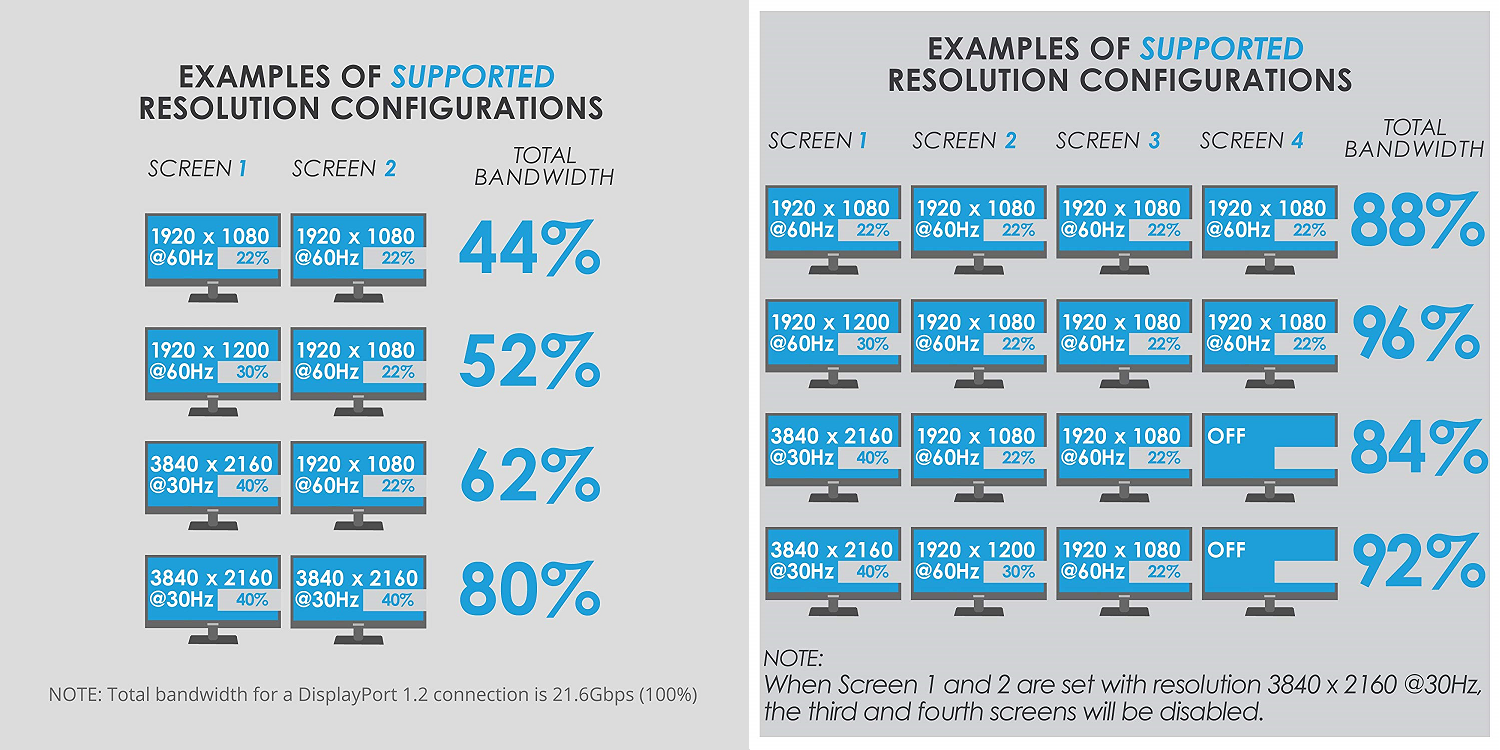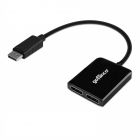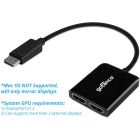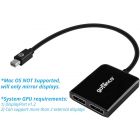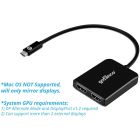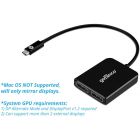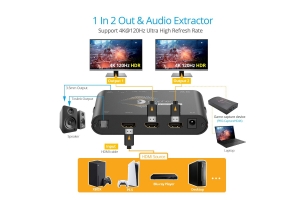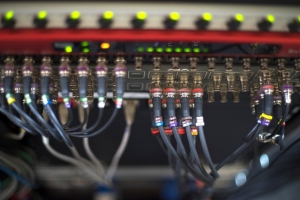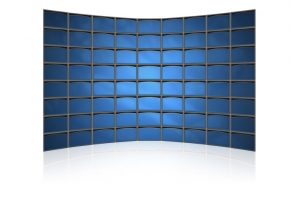We use cookies to make your experience better. To comply with the new e-Privacy directive, we need to ask for your consent to set the cookies. Learn more.
Create a Multi-Monitor Workstation with MST: Boost Productivity and Invite Creativity
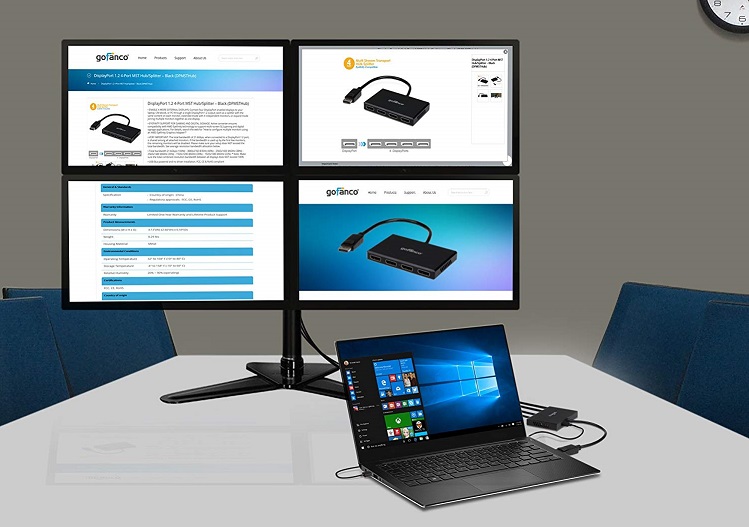
As business professionals, we are always searching for ways to increase productivity and get the most out of our work week. One of the most proven ways of doing this is to create a multi-display system, by adding one, two, three, or even six external monitors. In fact, Core Communications, sums up four studies which quantify the productivity boost of just one extra monitor. According to one study by the University of Utah, a second monitor can save each employee 2.5 hours each day if they use it for all their tasks. In turn, this time saved equates to money saved.
Fortunately, DisplayPort’s Multi-Stream Technology (MST) has provided an easy and cost-effective way to add multiple displays to your workstation. MST allows a DisplayPort 1.2, Mini DisplayPort 1.2, or USB-C (DP Alt-Mode Enabled) output port to extend your desktop or laptop across multiple monitors.
MST Hub Configuration
MST can be leveraged with two types of system configurations; however, we will discuss the most common type which is the use of an MST hub. An MST hub operates by independently splitting the DisplayPort 1.2 video streaming from your source device to each connected display. This allows for each monitor to display separately in the operating system and to be arranged as you wish. It is important to check the number of displays your graphics card can handle, which we will go over later.
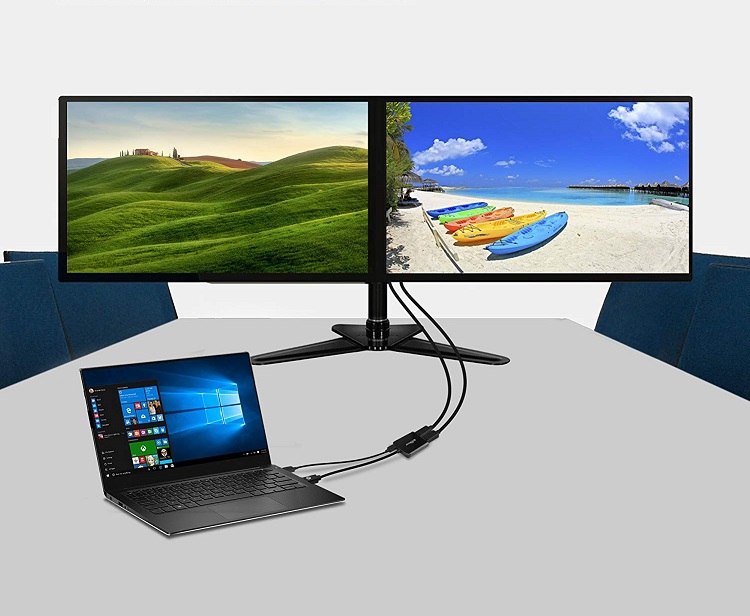
MST with Legacy Monitors
MST hubs have output ports of either DisplayPort or HDMI, but it is important to know that with the use of active adapters/converters, you can connect your legacy monitors as well.
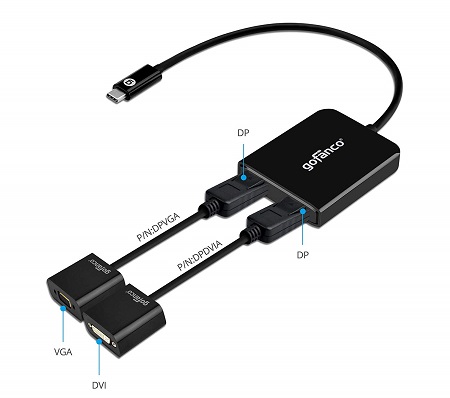
Video Modes
There are three video modes that can be obtained using MST. Each has their uses
1. Extended Mode
The most commonly used video mode for multitasking allows you to have different windows open on each monitor and easily move content from one screen to another. It is great for referencing data on one screen, while working on a document or spreadsheet on another. It can also help to compare two images, sets of data, or two products. If interested in discovering more use cases, check out this business article.

2. Mirror Mode
Also called duplicate or cloning, this video mode allows you to display the same content on each screen. This mode is more commonly used in commercial settings to display information or promotions to the masses walking by. Note: This is the only mode available for macOS users.

3. Video Wall Mode
The most visually appealing and eye-catching mode allows you to combine all your monitors into one giant monitor. It can provide a unique gaming experience by creating a super wide screen or catch the attention of crowd with a panoramic digital sign. Note: Video Wall mode (e.g., Panoramic) requires either an AMD Eyefinity, Intel, or NVIDIA Surround technology graphics adapter. Watch our video on how to create a video wall!

Checking Graphics Card Capability
Not all computer systems are capable of supporting MST or are limited to the number of screens they can handle, so it is important to check the manufacturer’s website for more information OR watch the video below!
1. Make sure your DisplayPort or Mini DisplayPort is DP v1.2 or later. This is the most important criteria. If you’re unsure, check with the video card or system manufacturer.
2. Mac OS does not support MST function and will only mirror the displays.
3. Install the latest drivers for your video card. Go directly to the system/video card manufacturer or chipset owner, such as AMD, Nvidia or Intel, to find the latest driver. Driver update through Device Manager may not retrieve the latest driver available.
4. MST hubs cannot increase the number displays a video card supports. Regardless of the number of display connectors built into your video card, each video card has a limited number of displays it can support. From our experience at the current time, AMD and NVIDIA video cards support up to 4 displays, while Intel supports up to 3. If you’re unsure, check with the video card or system manufacturer.
5. Refer to our bandwidth table to make sure additional displays can be accommodated. It’s important to note that if you use a 4K monitor to display in 1080p, there’s a possibility that the link still gets 4K bandwidth and reduces the overall bandwidth for the other displays.
6. The Microsoft Surface “Dock” is not compatible with Mini DisplayPort MST Hubs and should not be used when the Surface Dock is connected. They will work when directly connected to the Surface tablet/book.
7. Compatible Microsoft Surface Products: Surface Pro 2, Surface Pro 3, Surface Pro 4, Surface Book
8. Video Wall mode (e.g., Panoramic) requires either an AMD Eyefinity, Intel, or NVIDIA Surround technology graphics adapter.
Resolution Configuration
DisplayPort 1.2 ports have a limited bandwidth of 21.6 Gbps to feed enough pixels to each display. Check out of the graphic below for possible screen resolution and refresh rate configurations.
